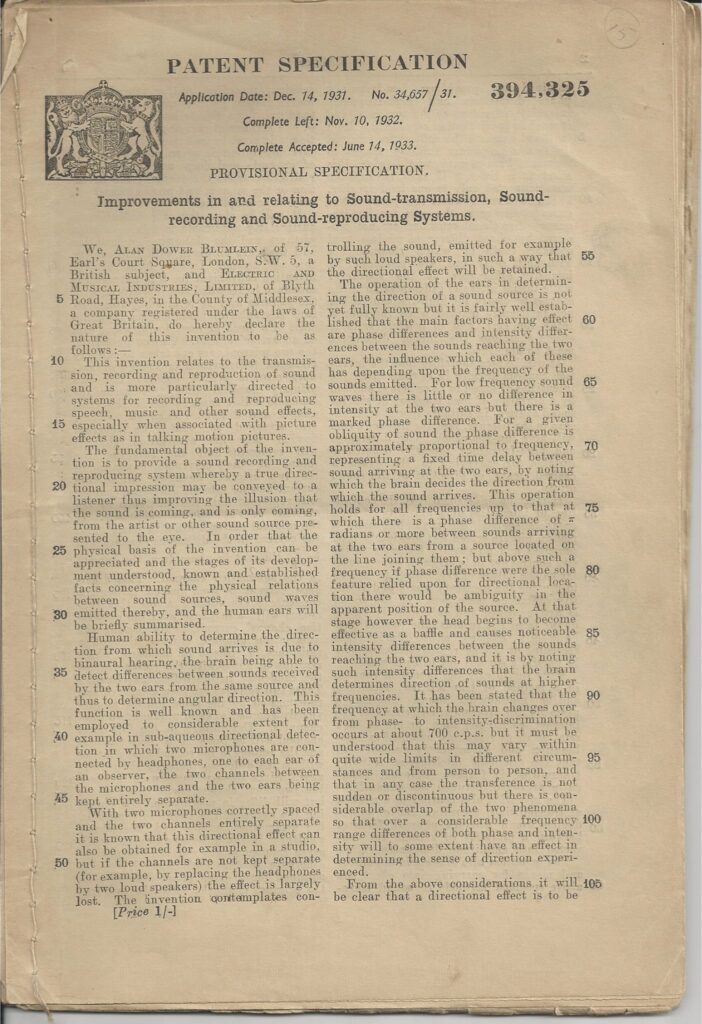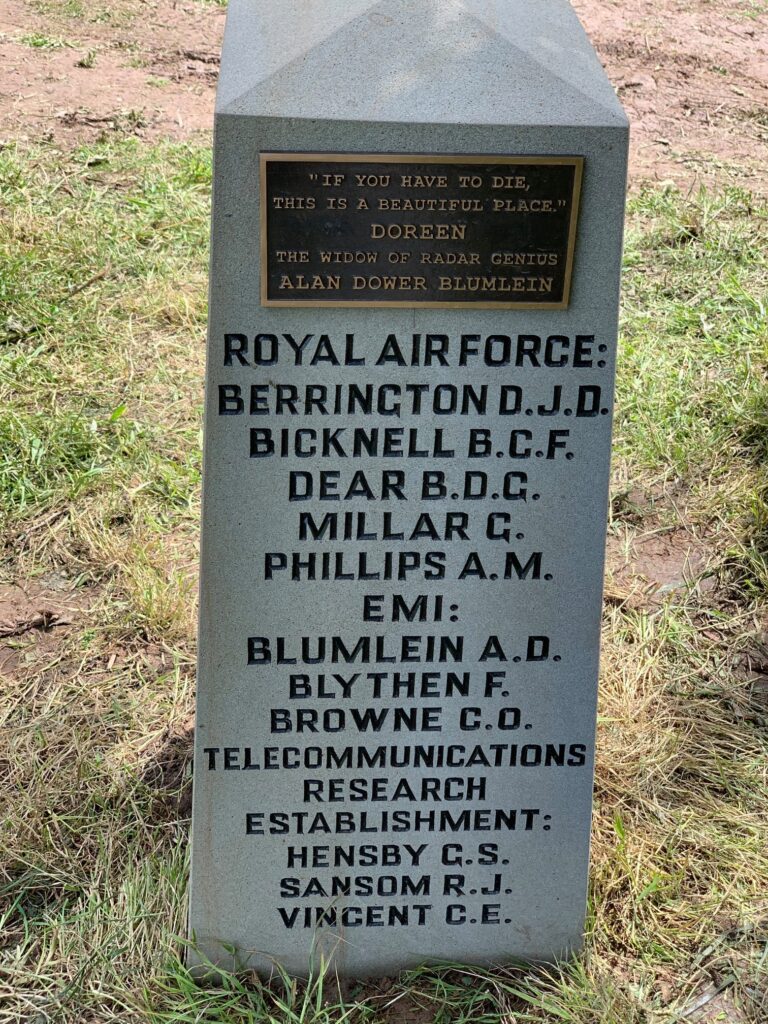Hi-Fi Hall of Fame
People Inductee
Alan Blumlein

Introduction
Alan Blumlein was a brilliant engineer and inventor whose contributions revolutionized audio and telecommunications. Blumlein’s groundbreaking work laid the foundation for stereo sound, stereophonic recording, and other advancements that continue to shape our modern audio and communication systems.
Born on June 29, 1903, in Hampstead, London, Alan Dower Blumlein displayed an exceptional aptitude for mathematics and science from an early age. He attended Highgate School and subsequently pursued electrical engineering at City and Guilds College, Imperial College London. Blumlein’s academic pursuits nurtured his passion for understanding the underlying principles of electromagnetism and telecommunications, ultimately setting the stage for his groundbreaking contributions.
Key Facts
| Name | Alan Blumlein |
| Category | Innovator |
| Born | June 28, 1903 |
| Died | June 7, 1942 (aged 38 years) |
| Key Technologies | Stereophonic sound Moving coil disc cutter Ultralinear amplifier “Blumlein pair” microphone configuration High Definition television H2S Radar |
| Inducted into the Hi-Fi Hall of Fame | May 2023 |
Technologies
Alan Blumlein’s career began at International Western Electric (later known as the Bell Labs) in London, where he worked on a range of telephony and audio projects. However, it was during his time at the Columbia Graphophone Company (which later became EMI Records) where he made his most significant breakthroughs.
Blumlein’s most enduring and transformative achievement was the invention of stereophonic sound. The concept of stereophonic sound traces its roots back to the late 19th century, when scientists and inventors began exploring methods to reproduce sound more faithfully. In 1881, Clement Ader, a French engineer, devised an experimental system using two telephone receivers to achieve a rudimentary stereo effect. This was the first time that “stereo” sound was produced through technology.

Alan Blumlein developed a number of technologies to enhance the performance and commercial feasibility of high fidelity sound. In 1931, he patented an innovative technique known as binaural sound recording, which used two microphones to capture stereo audio. This invention paved the way for spatial sound reproduction, immersing listeners in a more realistic auditory experience. Blumlein applied for a United Kingdom patent on 14 December 1931, and the patent was granted on 14 June 1933 as UK patent number # 394,325.

The patent included a remarkable 70 claims and covered may aspects of stereo sound reproduction. This included the idea of using a coincident pair of microphones with their axes at right angles to each other, which is still known as a “Blumlein Pair”. The patent also described the technique for recording two stereo channels in a single record groove, where the two groove walls are at right angles to each other.

Blumlein’s binaural experiments began in early 1933, and the first stereo records were cut later the same year. That same year, he patented a “moving-coil” microphone design, which revolutionized the recording industry by providing a superior audio quality compared to existing technologies. The EMI microphone shown here was one of the first to incorporate the new design.

This also led Blumlein to develop advanced cutting lathes, used for creating master recordings, which played a vital role in improving sound fidelity and quality of records. This included a method for recording two channels of audio into a single groove, with the two channels “cut” into the record at a 45 degree angle.


Much of the development work for cinematic use was completed by 1935. Alan Blumlein worked on the first stereo film, called “Trains at Hayes Station”, in which the sound “followed” the action on the movie screen.
In 1937, Blumlein patented what is now known as the “Ultra Linear” amplifier and he was granted a United States patent (patent # 2,218,902). A deceptively simple design, the circuit provided a tap on the primary winding of the output transformer to provide feedback to the second grid, which improved the amplifier’s linearity. With the tap placed at the anode end of the primary winding, the tube (valve) is effectively connected as a triode, and if the tap was at the supply end, as a pure pentode. Blumlein discovered that if the tap was placed at a distance 15–20% down from the supply end of the output transformer, the tube or valve would combine the positive features of both the triode and the pentode design.
Television technology was developed by many individuals and companies throughout the 1920s and 1930s. Blumlein’s contributions, as a member of the EMI team, started in earnest in 1933 when his boss, Isaac Shoenberg, assigned him full-time to TV research.
Blumlein contributed to the development of a number of key television technologies, including the waveform structure used in the 405 line Marconi-EMI system. This was developed for the UK’s British Broadcasting Corporation’s television service, and went into service as the world’s first scheduled “high definition” television service.
During World War II, Alan Blumlein’s engineering prowess was put to use in service of the British government. He made vital contributions to the development of radar systems, playing a crucial role in enhancing the nation’s defense capabilities. His most important contribution was to the development of the H2S airborne radar system to aid bomb targeting.
Sadly, Alan Blumlein was killed in the crash of an H2S-equipped Handley Page Halifax test aircraft. He was part of a team making a test flight for the Telecommunications Research Establishment (TRE) on 7 June 1942. During the flight from RAF Defford, whilst at an altitude of 500 ft (150 meters) the Halifax developed an engine fire which rapidly grew out of control. The aircraft was seen to lose altitude, then rolled inverted and struck the ground. The crash occurred near the village of Welsh Bicknor in Herefordshire.



Blumlein’s work in this field helped protect countless lives and proved his adaptability and versatility as an engineer. His work on radar systems during the war laid the foundation for subsequent advancements in radar technology, which became integral to various fields, including aviation, navigation, and meteorology.
Impact on Hi-Fi
Blumlein’s untimely death in 1942 at the age of 38 cut short a career that showed limitless potential. However, his legacy lives on.
Blumlein’s inventions and innovations fundamentally transformed the world of audio and telecommunications. His pioneering work on stereo sound revolutionized music production, cinema, and the way we experience audio entertainment. His patents and ideas continue to shape modern sound recording and playback technologies, including high-fidelity audio systems, surround sound, and home theater systems. In just 13 years working as an electrical engineer, Alan Blumein filed 121 patent applications in a wide range of fields.

Induction to the Hi-Fi Hall of Fame
For his many contributions to the Hi-Fi industry, and especially for his advancements in stereo sound, Alan Blumlein is inducted into the Hi-Fi Hall of Fame.
